Despite people’s fascination with planes, travel, and flight, there were many accidents and deaths in the history of aviation. Some of these were a distant memory, while others were gruesome enough to stick in the minds of people and the media and to make a lasting impression. While it’s unfortunate that sometimes it took crashes and human lives to make a significant change in the industry, one can view these as learning experiences that forced commercial aviation to become even safer. Here are the incidents, in chronological order, that took place that had the largest impact on modern aviation.
1954 : BOAC Flight 781
Pressurization
Summary : BOAC 781 was a de Havilland Comet passenger jet flying from Rome to London that crashed into the sea off the Italian coast after suffering an explosive decompression. All 35 people on board were killed. The loss was the second in a series of three fatal accidents over twelve months caused by structural failures The first was BOAC Flight 783 near Calcutta, India, in May 1953. The investigation found that, after encountering a storm, stress on the frame caused it to break apart. The third was South African Airways Flight 201 in April 1954, which was also eventually determined to be explosive decompression due to structural failure.
Findings : The ruptured lungs of deceased passengers pulled from the ocean were an indicator that the cabin depressurized – the sudden decrease would cause the lungs to expand until they broke. Investigators were able to conclude that the crash had been due to failure of the pressurized cabin at a forward window. The failure was a result of metal fatigue caused by the repeated pressurisation and depressurisation of the aircraft.
Changes : The crash of Flight 781 caused a revision in the estimates of the safety requirements of airliner pressure cabins and materials. In addition, it was discovered that the stresses around cabin apertures were considerably higher than anticipated, especially around sharp-cornered doors and windows. As a result, future jet airliners would feature windows with rounded corners which reduced stress.
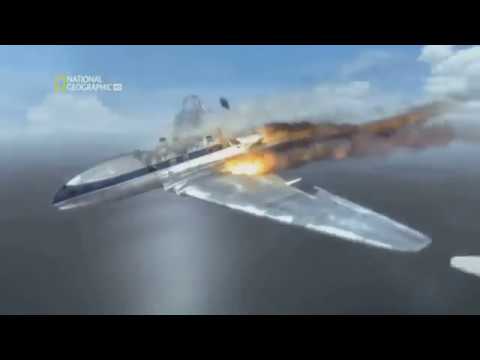
Related & Notable : Aloha Flight 143
As Aloha 243, a 19-year-old Boeing 737 on a short hop from Hilo, Hawaii, to Honolulu in 1988, leveled off at cruising altitude, a large section of its fuselage blew off, sucking out a flight attendant (somehow the only fatality) and leaving many passengers flying in open air. Miraculously, the plane held together long enough for the pilots to land. The NTSB blamed a combination of corrosion and fatigue damage, the result of repeated pressurization cycles during the plane’s ~89,000 flights. The FAA tightened inspection and maintenance requirements for aircraft.
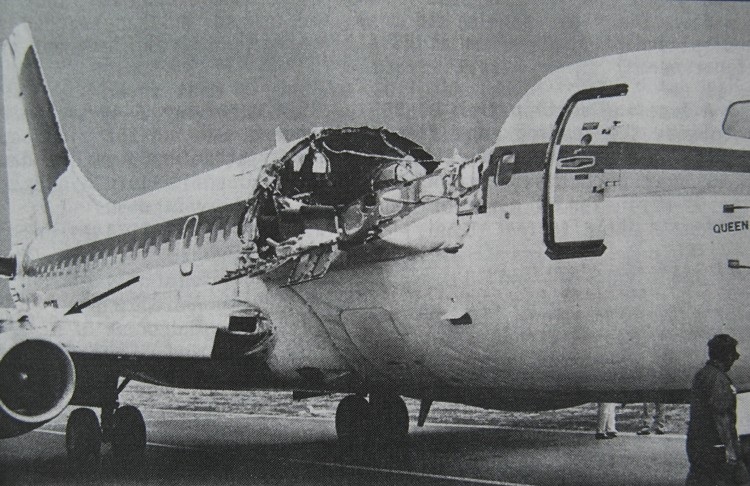
1956 : TWA Flight 2 & United Airlines Flight 718
Collision Avoidance and Improved ATC
Summary : A United Airlines Douglas DC-7 struck a Trans World Airlines Lockheed Super Constellation over the Grand Canyon. All 128 passengers and crew on board both flights perished.
Findings : The TWA Constellation, flying from Los Angeles to Kansas City, was in uncontrolled airspace near Colorado (out of range of air controllers, normal for the times). The United DC-7, flying Los Angeles to Chicago, also entered this uncontrolled space. With requests to change altitude due to weather unable to be both communicated to ATC and to other aircraft, separation remained difficult. The two planes collided at a 25 degree angle, resulting in mangled fuselages and explosive decompressions, and then plummeted into the canyon and exploded.
Changes : The accident resulted in a huge upgrade of the air traffic control system. Shortly after, the Federal Aviation Agency was created to oversee air safety.
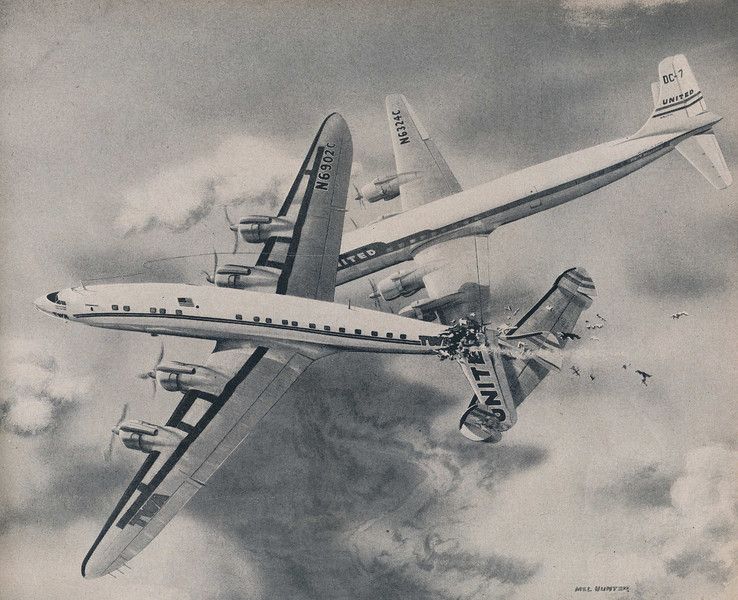
Related & Notable : PSA Flight 182 and Aeromexico Flight 498
Significant improvements to the ATC system would be implemented after two similar incidents. In 1978, a private plane flew into the landing path of San Diego Int’l Airport, crashing into PSA 182, a Boeing 727 just a few minutes from touching down. 144 people in the planes and on the ground were killed. In 1986, another private plane flew into the LAX control area, striking AM 498, a McDonnell Douglas DC-9, and killing 86 people. The FAA subsequently required all aircraft to use transponders (electronic devices that broadcast position and altitude). Airliners were also required to utilize the TCAS collision-avoidance system, which detects potential collisions with other planes and advises pilots to climb or dive to avoid each other.
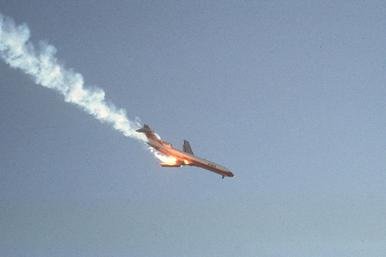
1978 : United Airlines Flight 173
Cockpit / CRM
Summary : United 173, a McDonnell Douglas DC-8, flying New York to Portland, Oregon with 189 people on board, circled near the airport for an hour as the crew tried to sort out a landing gear problem. Although warned of the diminishing fuel supply, the captain waited too long to begin his final approach. The DC-8 ran out of fuel and crashed in a suburb, killing 10.
Findings : With the crew disorganized and dealing with a landing gear issue (it was actually lowered but was not indicating as such), the three men in the cockpit were not communicating nor working together to solve the various issues.
Changes : Airlines revamped their cockpit training procedures around the then-somewhat-new concept of Cockpit Resource Management (CRM). Previously, the captain was considered “god” in the cockpit, while CRM emphasized teamwork and communication among the crew, and has since become the industry standard.
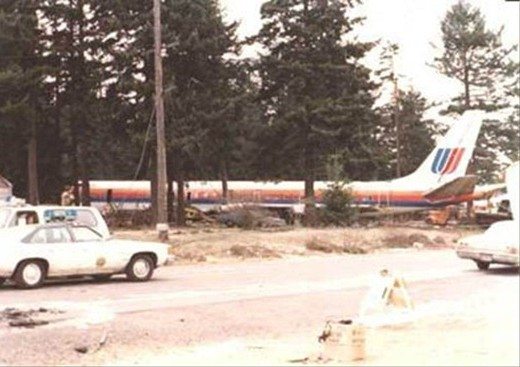
Related & Notable : Eastern Airlines Flight 401
In 1972, Eastern Airlines 401, flying from New York to Miami, crashed in a swamp in Florida just 18 miles from the runway. The Lockheed L-1011 pilots were distracted with a landing gear light, failing to notice that the autopilot disconnected and that the plane was losing altitude. The crash killed 101 people, but 75 survived. This flight introduced the concept of CRM, while the 1978 United crash made it widespread.
1979 : American Airlines Flight 191
Maintenance procedures
Summary : American Airlines 191, a McDonnell Douglas DC-10, was taking off from Chicago en route to Los Angeles. Upon lifting off, the left engine separated from the wing, ripping out hydraulic lines with it. The plane continued gaining altitude briefly, but rolled on its side and crashed near the end of the runway, killing 273 people.
Findings : This disaster was particularly gruesome since many people were watching, both from the airport itself and on the ground nearby (The plane also unusually featured in-cabin cameras, so the passengers are assumed to have watched themselves crash). Investigators traced the issue to faulty maintenance on the part of American Airlines – fractures stemming from improper procedures led to the engine falling off. McDonnell Douglas was faulted for various design issues on the DC-10 which had failed after the engine ripped off, possibly preventing the pilots from recovering from an “engine-out” incident.
Changes : With so many people seeing the crash, as well as photographs published by the media, American 191 was a publicity nightmare for both the airline and McDonnell Douglas. Maintenance procedures and audits were overhauled, and American paid hefty fines. Various instruments and controls were redesigned on all airplanes. The DC-10, with numerous crashes over the next few years, was mainly relegated to cargo service.
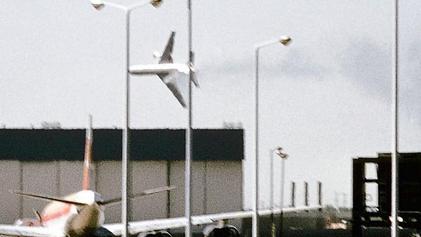
Related & Notable : Alaska Airlines Flight 261
In 2000, Alaska 261, a McDonnell Douglas MD-83, was flying from Puerto Vallarta to Seattle, with a stop in San Francisco. Over the Pacific, the plane loss pitch control and crashed into the ocean off LA, killing all 88 aboard. The cause was found to be improper maintenance of the jackscrew assembly, which controlled the rear stabilizers and prevented the plane from climbing or descending.
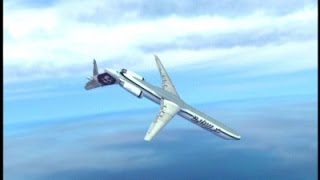
1983 Air Canada Flight 797
Fire protection, emergency requirements & procedures
Summary : Air Canada 797, a McDonnell Douglas DC-9 en route from Dallas to Toronto, began emanating smoke from the lavatory. The plane began an emergency descent into Cincinnati, where the pilot landed even though the cockpit was clouded with smoke. Shortly after, the doors and emergency exits were opened but the cabin erupted in a flash fire before everyone could get out. Of the 46 people aboard, 23 died.
Findings : A fire of unknown origin caused smoke in the cabin and eventually burned through some electrical wires, causing loss of power in some parts of the plane and cockpit, including the controls for the rear stabilizers. Blame partially fell on the crew for delaying to advise the captain and correct the smoke issue therefore taking longer to land.
Changes : The FAA mandated that aircraft lavatories be equipped with smoke detectors and automatic fire extinguishers, all jetliners had to be retrofitted with fire-resistant seat cushions and interior materials, and that floor lighting had to lead passengers to exits. Also, regulations regarding evacuation procedures were updated.
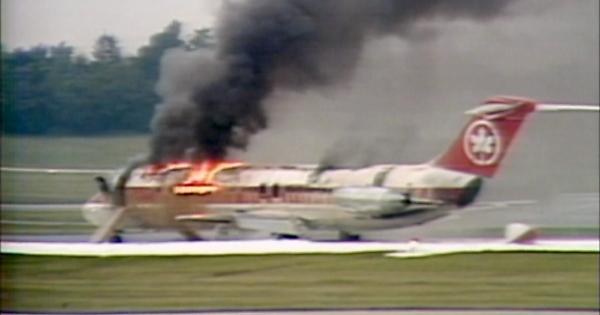
Related and Notable : Valujet Flight 592
In 1996, ValuJet 592, a McDonnell Douglas DC-9 flying Miami to Atlanta, crashed in the swamp after takeoff due to improperly stored cargo causing a fire in the hold. All 110 passengers died. The fire was caused by chemical oxygen generators that had been illegally packaged and shipped. The FAA made smoke detectors and automatic fire extinguishers in the cargo holds mandatory and changed rules regarding carrying hazardous cargo.
Related and Notable : SwissAir Flight 111
In 1998, the pilots of SwissAir 111, a McDonnell Douglas MD-11 flying from New York to Geneva, smelled smoke in the cockpit and began descending towards Halifax, Nova Scotia. The electrical fire above the cockpit rapidly burned through the control wires, and the pilots, unable to fly the plane, crashed into the ocean. All 229 people aboard were killed. The fire was traced to the plane’s in-flight entertainment network which ignited flammable insulation. The FAA ordered the insulation replaced with fire-resistant upgrades and required changes in aircraft material (testing, inspection, and maintenance), electrical systems,and flight data electronics, as well as new checklists in fire-detection and training
1985 : Delta Flight 191
Microburst and downdraft detection
Summary : As Delta 191, a Lockheed L-1011, lined up for landing at Dallas/Fort Worth airport, a thunderstorm appeared near the runway. At around 800ft high, the airliner encountered a microburst wind shear—a strong downdraft and abrupt shift in the wind. Losing altitude rapidly, the L-1011 hit the ground about a mile short of the runway and bounced across a highway, hitting vehicles and utility poles, and then crashed into two water tanks. 134 of 163 people onboard were killed.
Findings : The NTSB deemed the cause of the crash to be attributable to pilot error (deciding to fly through a thunderstorm), combined with extreme weather associated with microburst-induced wind shear. The bureau also determined that a lack of specific training, policies, and procedures for avoiding and escaping wind shear was a contributing factor.
Changes : The crash triggered a seven-year research effort involving the FAA and NASA, which led to improved training in addition to the on-board forward-looking radar wind-shear detectors that became standard equipment on airliners by the 1990’s.
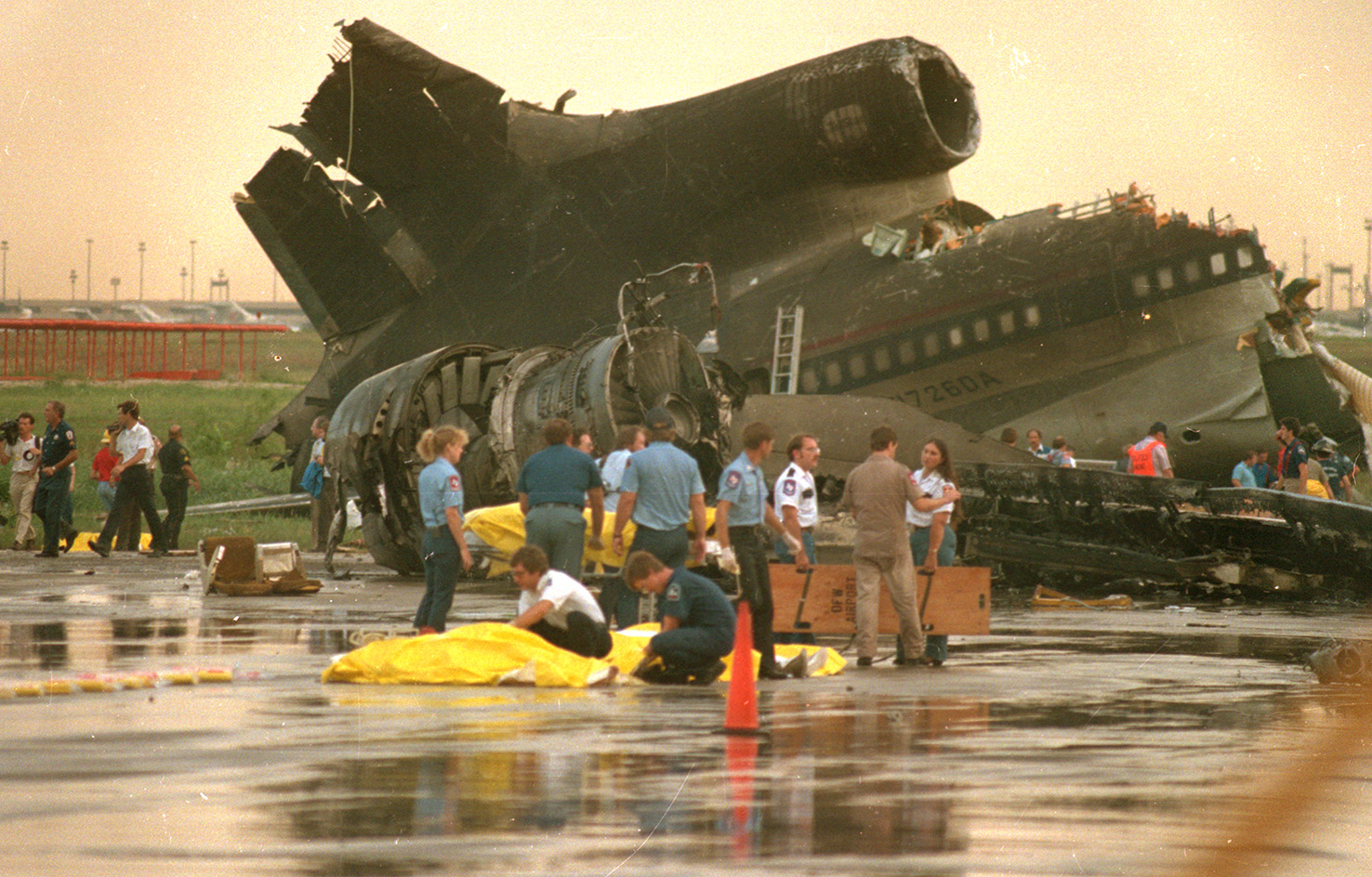
1989 : United Airlines Flight 232
Engine safety & maintenance
Summary : United 232 was en route from Denver to Chicago, when the engine in the tail of the McDonnell Douglas DC-10 suffered disk failure, severing the plane’s hydraulic lines and rendering the plane uncontrollable. The 296 people aboard experienced a flight from hell as the captain struggled to land with minimal controls. As it crashed on the runway, the DC-10 cartwheeled and caught fire. Somehow 185 survived (111 died).
Findings : The NTSB determined that the accident was caused by a failure to detect a crack in the engine fan disk that was traced back to the initial manufacture of the titanium alloy material.
Changes : The accident led the FAA to order modification to the DC-10’s hydraulic system (the aircraft was already being phased out by many airlines due to previous fatal crashes) and to require redundant safety systems in all aircraft. It also changed the way engine inspections and maintenance were performed. This was really the nail in the coffin for the DC-10, and eventually influenced Boeing’s purchase of McDonnell Douglas in the 1990s.
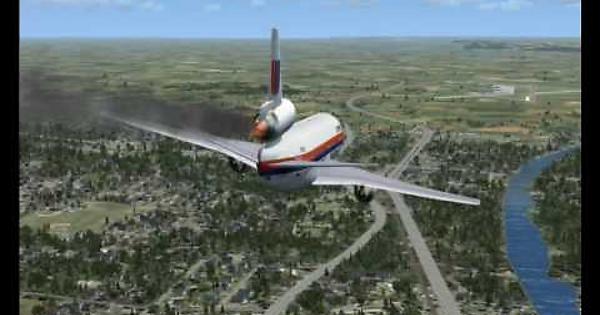
2014 : Malaysia Airlines Flight 370
Real-time flight tracking
Summary : Malaysia 370, a Boeing 777 carrying 239 people from Kuala Lumpur to Beijing, dropped off radar screens shortly after reaching cruising altitude. Locator pings from the engines to satellites, not generally used in normal aviation, have somewhat reliably shown the plane turning around and heading south into the Indian Ocean, the opposite direction from its destination.
Findings : The plane’s transponders were disabled, making the jet almost invisible as it changed course and headed south, where some experts believe it flew for up to seven hours before running out of fuel and crashing into the ocean. Years later, all we have as clues are a few parts that have washed up thousands of miles away. Theories range from rapid decompression to intentional sabotage from a crew member.
Changes : We wouldn’t still be looking for the plane if it had been equipped with real-time tracking. The International Civil Aviation Organization has ordered all airlines to install tracking equipment that will better locate planes. Aircraft manufacturers are also developing improved black boxes and recording devices.
Note : Terrorist attacks are not included. These incidents changed aviation in numerous ways, but this list is focused on changes from lessons learned in engineering and design, as well as human error. The 1988 Pan Am 103 “Lockerbie” disaster and the 911 attacks, for example, are not part of this article.
Note : Crashes involving the military are also not included here. Incidents such as the shooting of Malaysia Air 17 in 2014, Iran Air 655 in 1988, and Korean Air 007 in 1983, all of which had something to do with the military, are not on this list.
